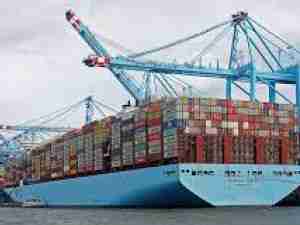The Port of Mobile, which became a leader in forest product transportation thanks in large part to pines of the U.S. Southeast, is now putting its burgeoning facilities to use handling almost as many imports as exports in the commodity sector that includes everything from lumber to woodpulp to paper.
US demand for such goods as Brazilian eucalyptus woodpulp and Scandinavian lumbers is fueling the booming import trade on wharves that for decades saw forest products as almost exclusively export commerce.
The activity is keeping Mobile docks so busy that Alabama State Port Authority officials are adding terminal space, extending operating hours and offering incentives to keep product moving.
The same infrastructure and service capabilities that traditionally were put to use for outbound goods are now being employed just as much for handling inbound shipments.
"Fortunately, a transit shed is a transit shed for forest products," said Smitty Thorne, vice president of operations for the Alabama State Port Authority. "It's just that now it's going in and out, not just out."
The Port of Mobile already boasts some of the largest and most advanced facilities anywhere for handling forest products, including the 460,000-square-foot Pier C terminal, recently expanded from 340,000 square feet, that port officials market as the largest dedicated forest products terminal in North America.
Thorne takes pride in the quality of his port's forest product terminal facilities. He noted that they have sealed floors that undergo consistent sweeping. Also, grating at doorways helps keep small debris from staying on the floors. Therefore, he said, woodpulp can be stacked directly on floors rather than having to rest on sticks or palettes.
Indeed, the Alabama State Port Authority has spent more than $50 million on forest product facilities over the past half-dozen years. In addition to the Pier C expansion, the port added, in late 2003, the 200,000-square-foot North A warehouse. Future expansion in the Pier E area, which now has a pair of 125,000-square warehouses on the Mobile River, would add a third similar waterfront facility plus three more behind them, all tied together by rail and truck corridors.
"The challenge is to keep the stuff moving," said Thorne, who noted that the port has more-than-doubled demurrage charges while increasing the free time forest products may dwell.
Unlike some South Atlantic ports where forest products are trucked to off-port warehouses and then loaded on rail cars, much of the activity at Mobile transit sheds involves direct rail loading.
For example, rail cars at the Pier C terminal may be loaded with Brazilian eucalyptus woodpulp bound for plants in Alabama within a 100-mile radius or headed as far as 1,100-plus miles to Green Bay, WI. SSA/Cooper (CSA) stevedoring crews use dual squeeze machines that grab stacks of the commodity from the sides, speeding the loading process.
Rail capabilities have long been a strength for the Port of Mobile, which is
served by five Class 1 railroads, with Kansas City Southern the most recent
additional two years ago. The port also has ready access to two major
Interstate highways, East-West artery I-10 and North-South route I-65.
Woodpulp remains the Port of Mobile's leading forest product commodity, and the Brazilian product, much of it from Aracruz Celulose, is a big reason why. Thorne noted that ready forest reserves and low-cost labor are encouraging domestic companies to look offshore for supplies. The commodity is produced through cash crop operations on tropical plantations where eucalyptus trees can grow to maturity in as few as five years. The Aracruz product is excellent for making soft paper products, including tissues and diapers.
Exports of woodpulp do continue, however. The largest exporter of the product through Mobile is Alabama River Group (formerly Alabama River Pulp), which runs two truck cycles per day along the 90-mile route between Perdue Hills










